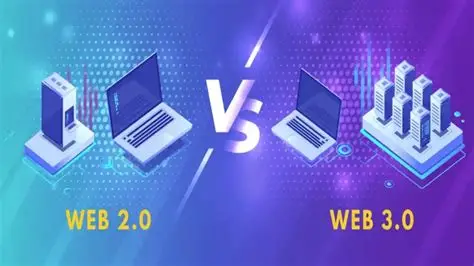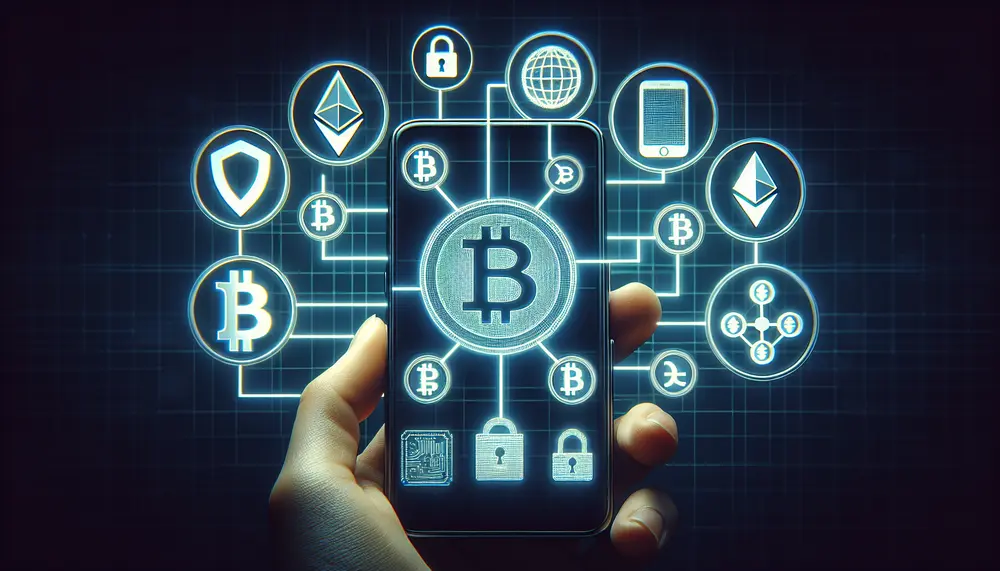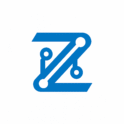For years, the term Web3 has been tossed around as a buzzword for the next digital revolution.
But behind the hype lies something much more practical — a technological shift that could redefine how people interact with money, banks, and digital identity.
While cryptocurrencies introduced the idea of decentralized finance (DeFi), Web3 is turning it into everyday reality. It’s not just about buying Bitcoin anymore — it’s about rethinking what banking means in a world where you control your data, your assets, and your financial future.
From Web2 to Web3: The Shift in Ownership
To understand Web3’s impact, we first need to look at what it’s replacing.
In Web2, users log into financial apps, social networks, and marketplaces through centralized platforms — banks, PayPal, Google, or Apple — that hold both our data and our trust.
In Web3, users access services through decentralized networks where ownership and control are returned to the individual.
Instead of your bank managing your account, you hold your own wallet — a digital identity secured by blockchain technology.
Transactions are peer-to-peer, verified by smart contracts, and transparent on public ledgers.

That means:
- No third-party intermediaries taking unnecessary fees.
- No single point of failure or control.
- And no need to “trust” an institution that could restrict access to your funds.
“Web3 gives individuals direct control over their digital lives,” explains Naomi Fischer, a fintech researcher at ETH Zurich. “In finance, that means self-custody of assets, programmable money, and identity systems that travel with you — not with your bank.”
What Web3 Banking Looks Like
Web3 banking doesn’t necessarily mean your local bank disappears.
Rather, it’s about traditional institutions evolving — integrating blockchain and decentralized technologies into their existing frameworks.
Here’s what that might look like in practice:
🏦 1. Tokenized Bank Accounts
Instead of a simple ledger entry, each deposit could be represented as a token on a blockchain, instantly verifiable and transferable.
This makes cross-border transactions faster, cheaper, and transparent.
💳 2. Self-Custody Digital Wallets
Web3 wallets, like MetaMask or newer institutional-grade options, act as multi-purpose digital IDs.
They hold your money, verify your identity, and even log into apps securely — replacing passwords with blockchain signatures.
💰 3. Smart Contracts for Loans and Payments
Borrowing, lending, and recurring payments could all be managed by automated smart contracts, which execute conditions instantly when met — no middleman, no waiting periods.
🌐 4. Cross-Platform Interoperability
Imagine logging into any financial service — from an insurance provider to an investment app — using the same verified Web3 ID.
This eliminates redundant KYC checks and unifies your financial experience.
Banks Are Joining, Not Fading
Contrary to early crypto idealism, Web3 doesn’t spell the end of banks — it’s a new era of collaboration.
Banks are experimenting with tokenized deposits, digital bonds, and even DeFi partnerships.
J.P. Morgan, for example, runs Onyx, a blockchain-based network for cross-border payments.
In Europe, Societe Generale issued the continent’s first regulated stablecoin in 2024, backed by the euro and supervised by French authorities.
This hybrid model — centralized trust + decentralized technology — could make the financial system more efficient without losing regulatory safeguards.
“We’re not replacing banks,” says Fischer. “We’re replacing their outdated infrastructure.”
Why It Matters for Everyday Users
For everyday customers, Web3 banking promises three main benefits:
🔒 1. Greater Financial Privacy
Your data lives in your wallet, not on a corporate server.
You decide who can access your financial information — and revoke it anytime.
⚡ 2. Faster, Cheaper Transactions
International transfers could take seconds, not days, and cost a fraction of what they do now.
🌍 3. Global Access
Anyone with an internet connection can participate.
That’s transformative for the 1.4 billion unbanked people worldwide who currently lack access to traditional financial systems.
In essence, Web3 could make financial inclusion not just a goal — but a default.
Challenges Ahead: Security and Regulation
Of course, decentralization comes with its own set of challenges.
⚠️ Security Risks
Self-custody means self-responsibility.
Losing a private key could mean losing your funds forever — a problem banks used to handle for you.
⚖️ Regulatory Uncertainty
Governments are still figuring out how to classify and oversee Web3 financial activity.
In both the U.S. and Europe, new frameworks are emerging (like MiCA and the Digital Asset Market Structure Act) to ensure consumer protection while encouraging innovation.
🧩 User Experience
Let’s face it — managing crypto wallets, seed phrases, and DeFi apps is still intimidating for average users.
Until UX becomes seamless, widespread adoption will remain limited.

The Road Ahead
The most likely future is not a “crypto takeover”, but a fusion of systems:
Traditional banks offering Web3 services, fintech startups embedding blockchain, and governments introducing central bank digital currencies (CBDCs) that interact with decentralized networks.
As this convergence unfolds, the financial landscape will become more open, programmable, and interoperable — giving individuals the kind of control that used to belong only to institutions.
The revolution won’t happen overnight. But when your paycheck, savings, and ID all live securely in your digital wallet — that’s when Web3 will have arrived.
